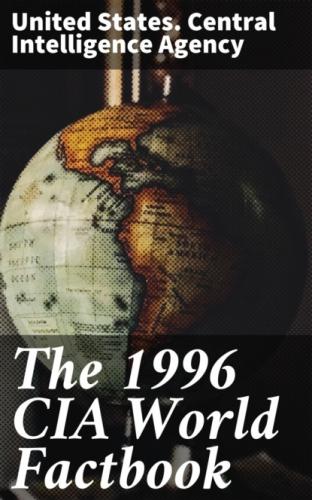Exports: $188.2 million (f.o.b., 1991) commodities: fruits and nuts, handwoven carpets, wool, cotton, hides and pelts, precious and semi-precious gems partners: FSU countries, Pakistan, Iran, Germany, India, UK, Belgium, Luxembourg, Czechoslovakia
Imports: $616.4 million (c.i.f., 1991) commodities: food and petroleum products; most consumer goods partners: FSU countries, Pakistan, Iran, Japan, Singapore, India, South Korea, Germany
External debt: $2.3 billion (March 1991 est.)
Economic aid:
recipient: ODA, $NA
note: US provided $450 million assistance (1985–93); the UN provides
assistance in the form of food aid, immunization, land mine removal,
and a wide range of aid to refugees and displaced persons
Currency: 1 afghani (AF) = 100 puls
Exchange rates: afghanis (Af) per US$1 - 7,000 (January 1995), 1,900 (January 1994), 1,019 (March 1993), 850 (1991); note - these rates reflect the free market exchange rates rather than the official exchange rate, which is a fixed rate of 50.600 afghanis to the dollar
Fiscal year: 21 March - 20 March
Transportation———————
Railways:
total: 24.6 km
broad gauge: 9.6 km 1.524-m gauge from Gushgy (Turkmenistan) to
Towraghondi; 15 km 1,524-m gauge from Termiz (Uzbekistan) to
Kheyrabad transshipment point on south bank of Amu Darya
Highways: total: 21,000 km paved: 2,800 km unpaved: 18,200 km (1984 est.)
Waterways: 1,200 km; chiefly Amu Darya, which handles vessels up
to about 500 DWT
Pipelines: petroleum products - Uzbekistan to Bagram and
Turkmenistan to Shindand; natural gas 180 km
Ports: Kheyrabad, Shir Khan
Airports:
total: 35
with paved runways over 3 047 m: 3
with paved runways 2 438 to 3 047 m: 4
with paved runways 1 524 to 2 437 m: 2
with paved runways under 914 m: 7
with unpaved runways 2 438 to 3 047 m: 3
with unpaved runways 1 524 to 2 437 m: 13
with unpaved runways 914 to 1 523 m: 3 (1995 est.)
Heliports: 3 (1995 est.)
Communications———————
Telephones: 31,200 (1983 est.)
Telephone system:
domestic: very limited telephone and telegraph service; 1 public
telephone in Kabul
international: satellite earth stations - 1 Intelsat (Indian Ocean)
linked only to Iran and 1 Intersputnik (Atlantic Ocean Region)
Radio broadcast stations: AM 5, FM 0, shortwave 2
Radios: NA
Television broadcast stations: NA note: several television stations run by factions and local councils which provide intermittent service
Televisions: 100,000 (1993 est.)
Defense———
Branches: NA; note - the military still does not exist on a national scale; some elements of the former Army, Air and Air Defense Forces, National Guard, Border Guard Forces, National Police Force (Sarandoi), and tribal militias still exist but are factionalized among the various mujahedin and former regime leaders
Manpower availability: males age 15–49: 5,549,602 males fit for military service: 2,976,741 males reach military age (22) annually: 220,532 (1996 est.)
Defense expenditures: $NA, NA% of GDP
======================================================================
@Albania———
Map—
Location: 41 00 N, 20 00 E—Southeastern Europe, bordering the
Adriatic Sea and Ionian Sea, between Greece and Serbia and Montenegro
Flag——
Description: red with a black two-headed eagle in the center
Geography————
Location: Southeastern Europe, bordering the Adriatic Sea and
Ionian Sea, between Greece and Serbia and Montenegro
Geographic coordinates: 41 00 N, 20 00 E
Map references: Europe
Area:
total area: 28,750 sq km
land area: 27,400 sq km
comparative area: slightly larger than Maryland
Land boundaries:
total: 720 km
border countries: Greece 282 km, The Former Yugoslav Republic of
Macedonia 151 km, Serbia and Montenegro 287 km (114 km with Serbia,
173 km with Montenegro)
Coastline: 362 km
Maritime claims:
continental shelf: 200-m depth or to the depth of exploitation
territorial sea: 12 nm
International disputes: the Albanian Government supports protection of the rights of ethnic Albanians outside of its borders; Albanian majority in Kosovo seeks independence from Serbian Republic; Albanians in Macedonia claim discrimination in education, access to public-sector jobs and representation in government; Albania is involved in negotiations with Greece over border demarcation, the treatment of Albania's ethnic Greek minority, and migrant Albanian workers in Greece
Climate: mild temperate; cool, cloudy, wet winters; hot, clear, dry summers; interior is cooler and wetter
Terrain: mostly mountains and hills; small plains along coast lowest point: Adriatic Sea 0 m highest point: Maja e Korabit 2,753 m
Natural resources: petroleum, natural gas, coal, chromium, copper,
timber, nickel
Land use:
arable land: 21%
permanent crops: 4%
meadows and pastures: 15%
forest and woodland: 38%
other: 22%
Irrigated land: 4,230 sq km (1989)
Environment:
current issues: deforestation; soil erosion; water pollution from
industrial and domestic effluents
natural hazards: destructive earthquakes; tsunami occur along
southwestern coast
international agreements: party to - Biodiversity, Climate Change
Geographic note: strategic location along Strait of Otranto (links
Adriatic Sea to Ionian Sea and Mediterranean Sea)
People———
Population: 3,249,136 (July 1996 est.)
note: the IMF, working with Albanian government figures, estimates
